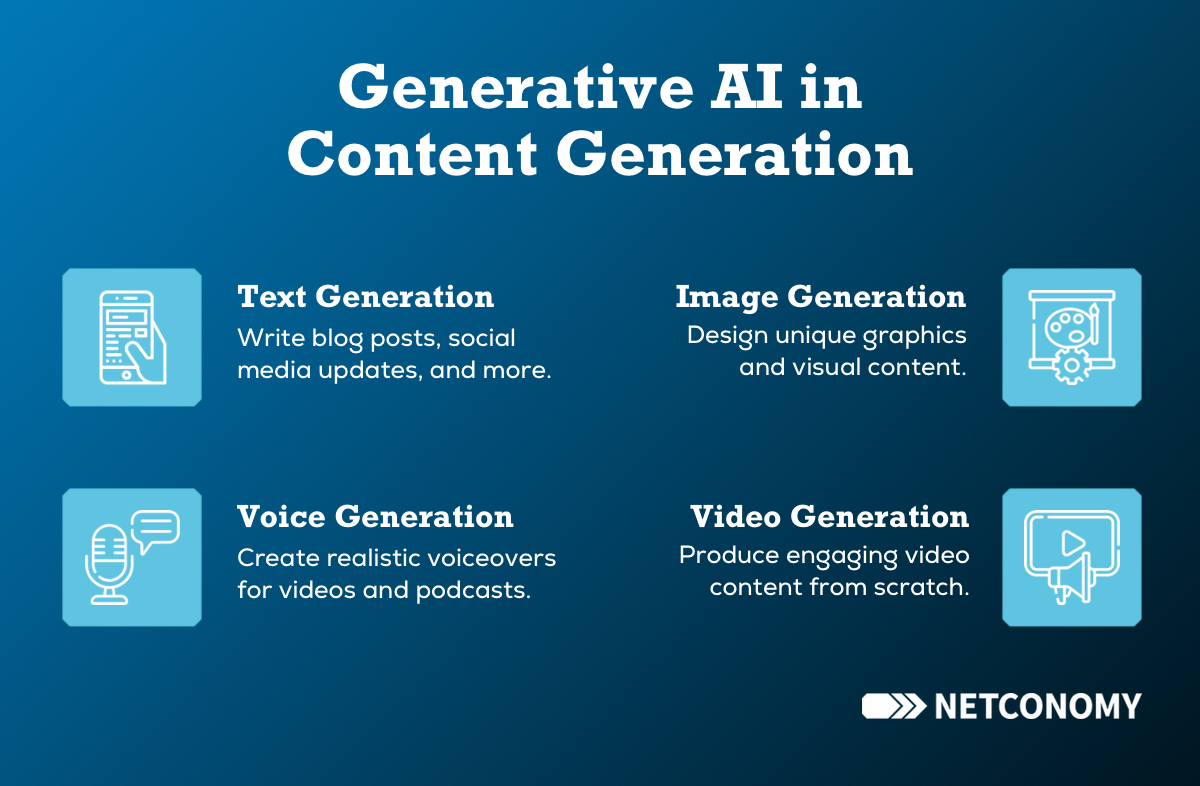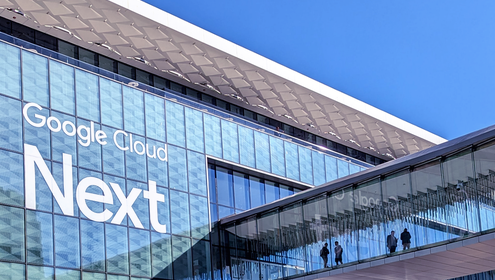Unless you’ve been living under a rock this past year, you know that generative AI is the number one technology on everyone’s mind – and its business use cases just keep growing.
Marketers around the world are raving about its potential to revolutionize their strategies, streamline operations, and deliver personalized experiences like never before.
But as exciting as this sounds, it’s not all smooth sailing. Implementing generative AI in marketing comes with its own set of challenges. Quality assurance can become a daunting task, while ethical and privacy concerns are shaping up to be a severe headache. And, despite the advanced capabilities of AI, human supervision is still a must.
So, what is the way forward? Is generative AI the game-changer it promises to be, or will its challenges dampen its impact?
In this blog post, we’ll highlight the benefits of using generative AI in marketing, explore its real-world applications, and navigate the potential challenges specific to marketing. By the end, you’ll have a clear understanding of how to leverage this technology effectively and responsibly, transforming your marketing operations into a faster, more personalized powerhouse.
Here’s what we’ll cover:

Benefits of Using Generative AI in Marketing
McKinsey research shows that marketing and sales are among the departments set to gain the most out of the AI revolution. This is not surprising, as generative AI can help your teams produce quality content in the blink of an eye.
The four main benefits of generative AI in marketing are:
- efficiency and speed
- scalability
- precision and personalization
- greater creativity
Efficiency and Speed
Let’s face it – no one likes staring at a blank page for hours or trying to draft content from scratch. So it’s not surprising that one of the most significant advantages of generative AI in marketing is the increased efficiency and speed it brings to the table.
Marketers can now use AI to brainstorm ideas or automate some of their creative processes quickly. It’s like having an extra pair of hands that work at lightning speed and never tire.
Scalability
With generative AI, scaling your marketing efforts doesn’t necessarily mean increasing your resources proportionally.
You can generate more content, personalize campaigns, and reach more people without needing to expand your team or budget significantly. This means you can grow faster and more efficiently.

Precision and Personalization
In today’s digital world, personalization is the name of the game. Customers expect brands to understand their needs and deliver personalized experiences.
Generative AI can analyze customer data to understand individual preferences and behaviors, allowing for highly targeted and personalized marketing campaigns.
Greater Creativity
Who said machines can’t be creative? Generative AI can come up with unique ideas that humans might not think of.
It’s not about replacing human creativity but augmenting it. By generating new ideas or suggesting different approaches, AI can help stimulate human creativity and innovation.
Generative AI in Action: Real-World Use Cases
The most common use cases for generative AI in marketing are:
- content generation
- personalized marketing campaigns
- automated outbound marketing
Content Generation
Generative AI can make life a lot easier when creating and sharing content. This doesn’t just mean text – it can also work with voice, images, and videos.
Plus, it can turn one piece of content into different formats quickly. For example, a long blog post can be turned into a bunch of smaller posts for social media.

You can also teach the AI about your brand and tone of voice so it can create content that sounds like you.
But while this seems great, it’s important to remember that there are limits to what the current generation of generative AI can do. We’ve been testing out different solutions within our marketing department and have found that the longer the content, the lower the quality might be.
So, for now, it’s better to use AI for short posts or early drafts rather than long, detailed pieces.
Personalized Marketing Campaigns
Personalized marketing campaigns are another area where generative AI shines. By analyzing first-party data and market trends it can help marketers create highly targeted campaigns that resonate with each customer. This level of personalization can significantly improve customer experience and boost your conversion rates.
With generative AI, your marketing teams can instantly translate content and campaigns into different languages. This not only cuts costs but also provides access to markets that might have been previously closed or difficult to reach.
Here’s a bonus for those looking to implement AI in retail. Generative AI can enhance conversion rates by creating custom product descriptions and images. These personalized elements are tailored to each viewer, ensuring a strong connection with the brand.

Automated Outbound Marketing
This use case doesn’t just help your marketing. It’s also a game-changer for your sales team.
Since large language models can mimic human speech, you can use these solutions to automate parts (or the whole) of your outbound workflows.
Imagine this: You feed it information about who you want to target and what’s happening in the market. Then, it starts emailing or chatting with potential customers. This allows for consistent communication with customers while freeing up your teams to focus on more strategic tasks.
Of course, you would be wise to keep a human in the loop to ensure the messaging is on point and up to your standards.
Challenges and Risks of Implementing Generative AI in Marketing
While the benefits for marketing are significant, you need to be aware of potential risks of generative AI that may arise during implementation.
The biggest challenges of implementing generative AI in marketing are:
- quality assurance
- ethical and privacy concerns
- need for human supervision
Quality Assurance
As with any automated process, there’s a risk of quality degradation. We’ve all heard stories of generative AI solutions ‘hallucinating’ and providing wrong answers that sound like the truth.
While this can be slightly annoying if you ask for a cooking recipe, it becomes a serious headache if it’s connected to your brand and a product your customers pay for.
That’s why it’s crucial to have processes in place to review and refine AI-generated content.
Ethical and Privacy Concerns
Generative AI solutions rely on huge sets of data they get from the internet, raising concerns about privacy and ethics. There have been many cases where generative AI processed content that was clearly copyright protected – like when Stable Diffusion produced images with a Getty watermark.
There have also been cases where the gen AI solution was tricked into providing the personal information of its users or company data that should have been kept confidential.
To protect their customers and their brand, marketers must ensure they’re using data responsibly, while respecting privacy laws. They should also be fully transparent with customers about how their data is used.
Need for Human Supervision
Despite its advanced capabilities, generative AI still requires human supervision. Humans need to guide the AI, review its output, and make strategic decisions.
In its current state of development, generative AI is best used to augment human capabilities, not replace them altogether. This is why balancing the use of AI with human oversight is critical to successful implementation.
Final thoughts on Generative AI in Marketing
Generative AI holds massive potential for marketing. Its ability to increase efficiency, scale efforts, personalize campaigns, and stimulate creativity can transform how marketers operate. However, it’s vital to navigate the implementation challenges carefully to leverage this technology effectively and responsibly.














